
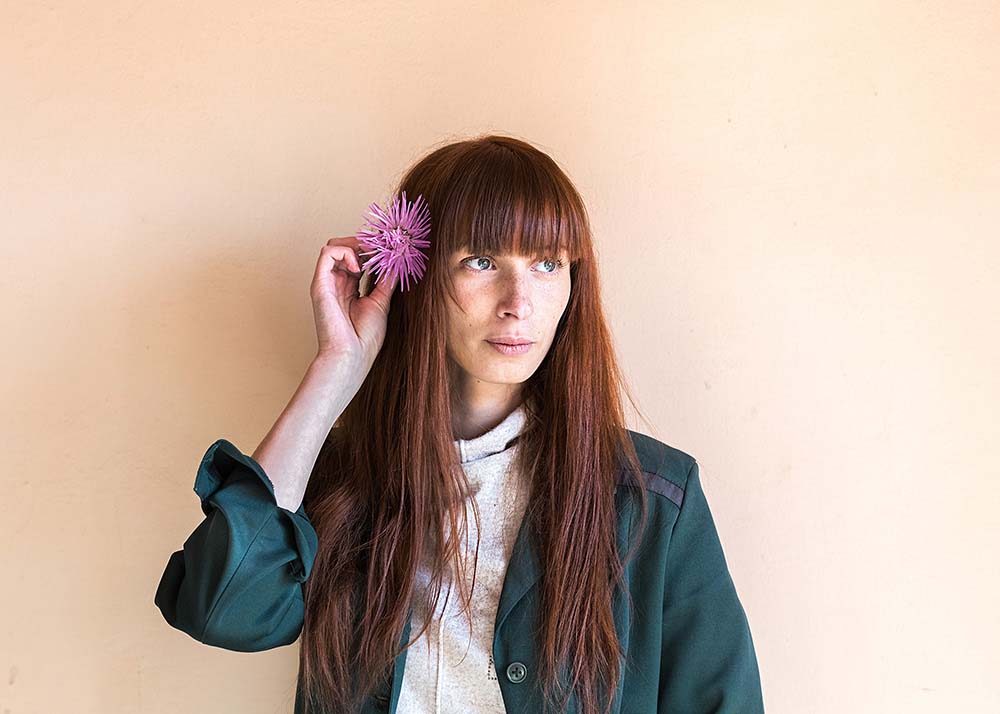
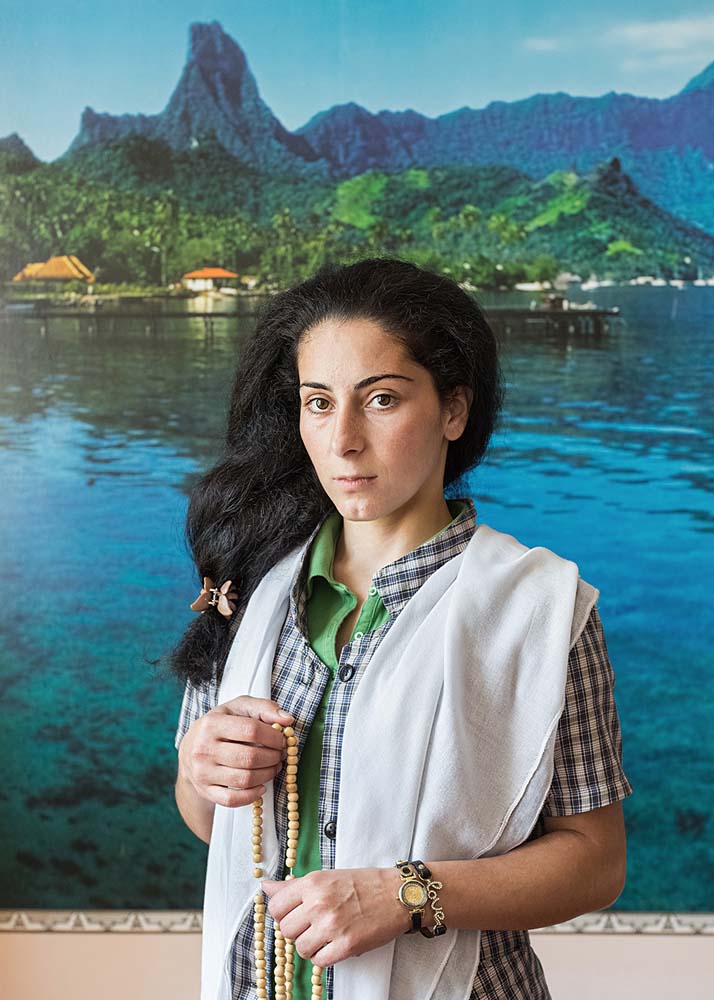
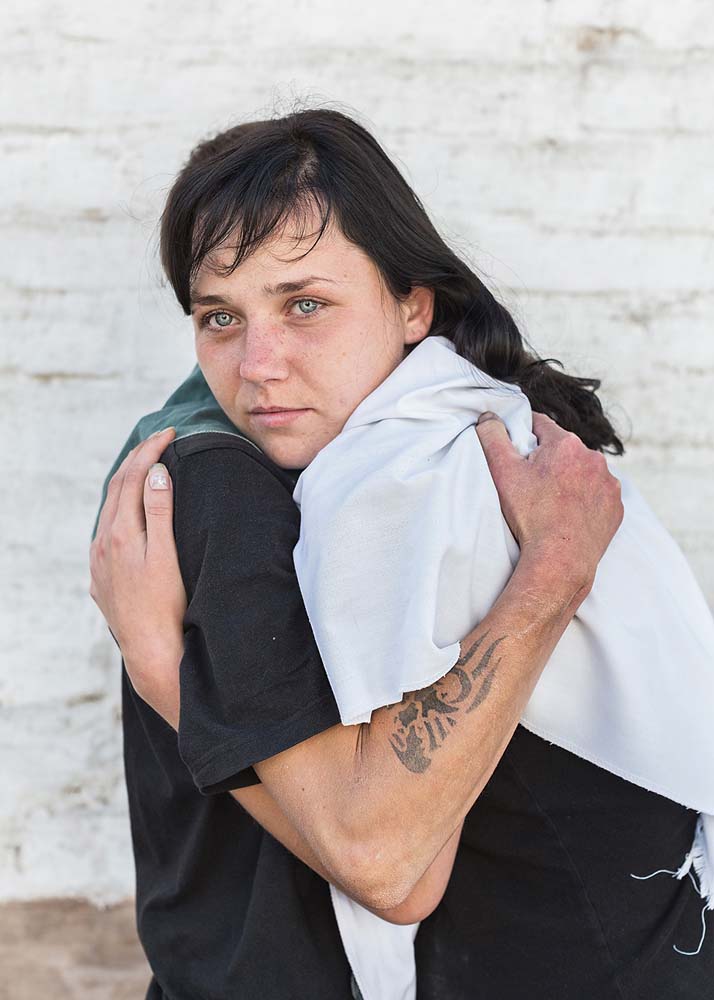
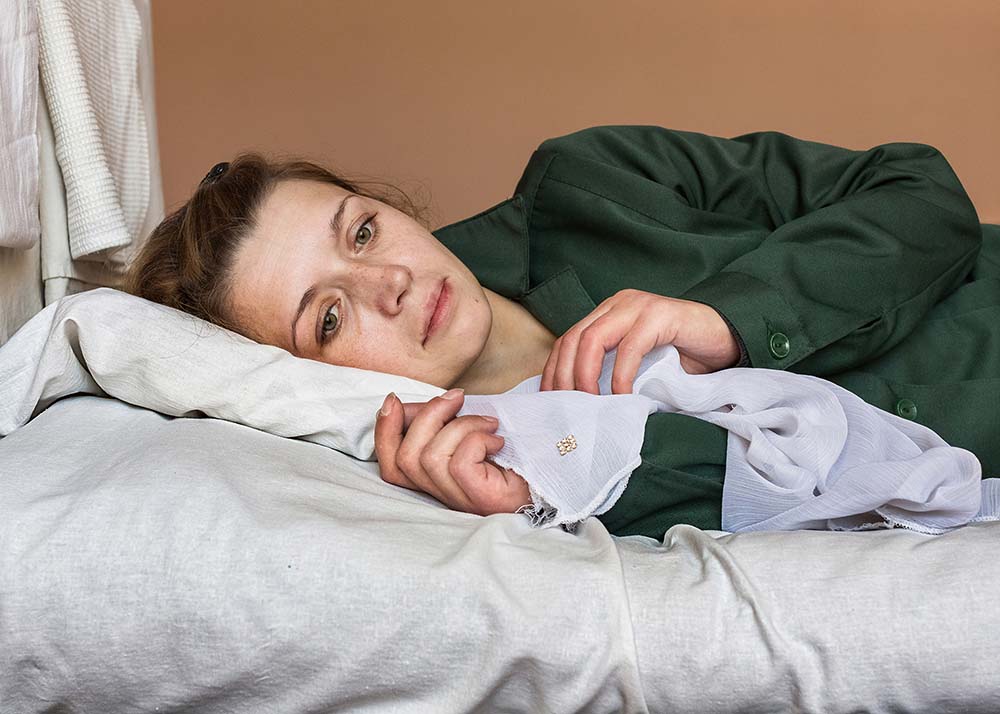
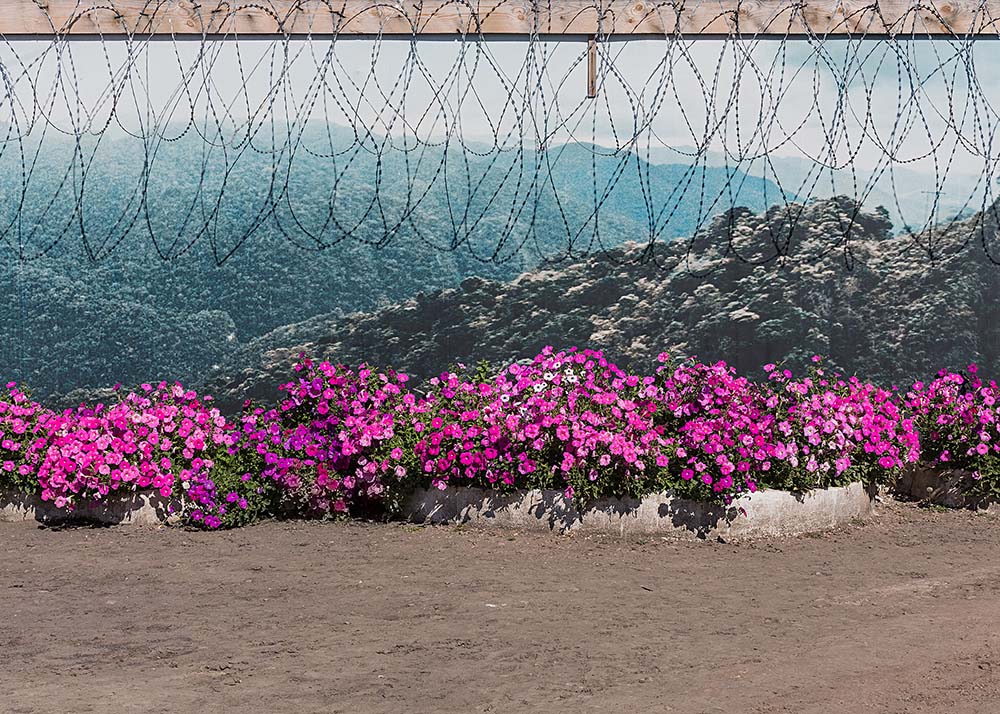
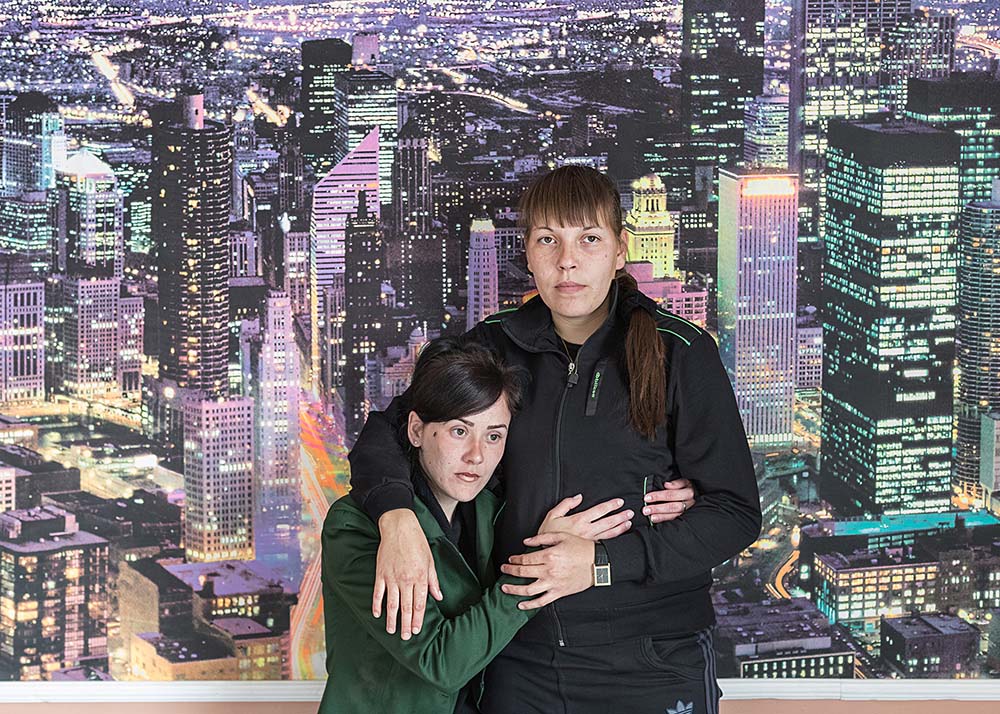
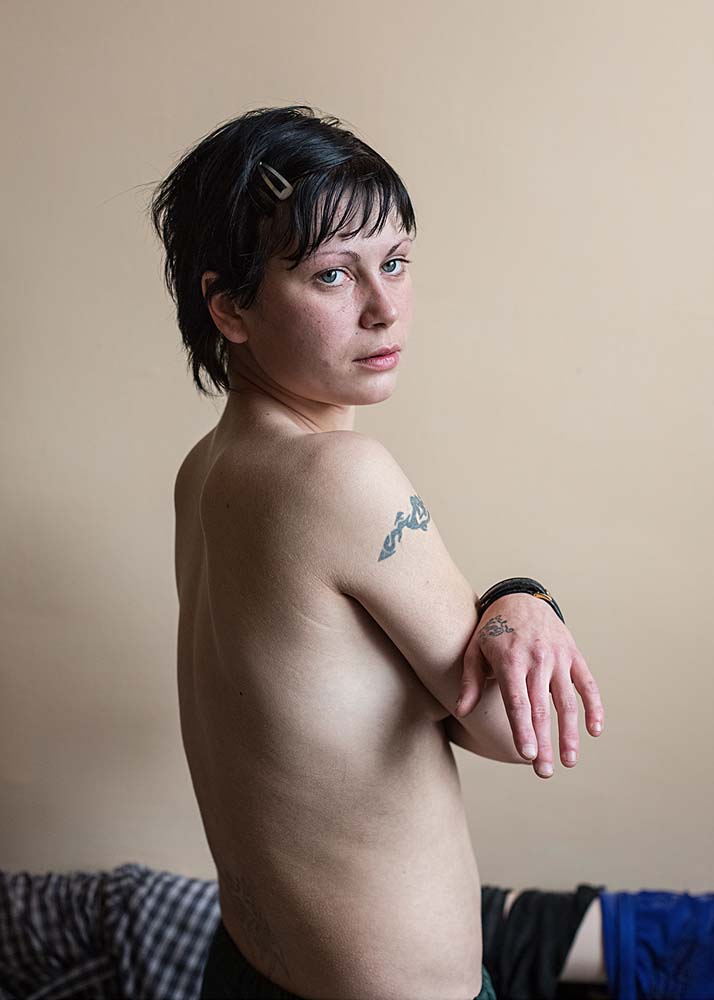

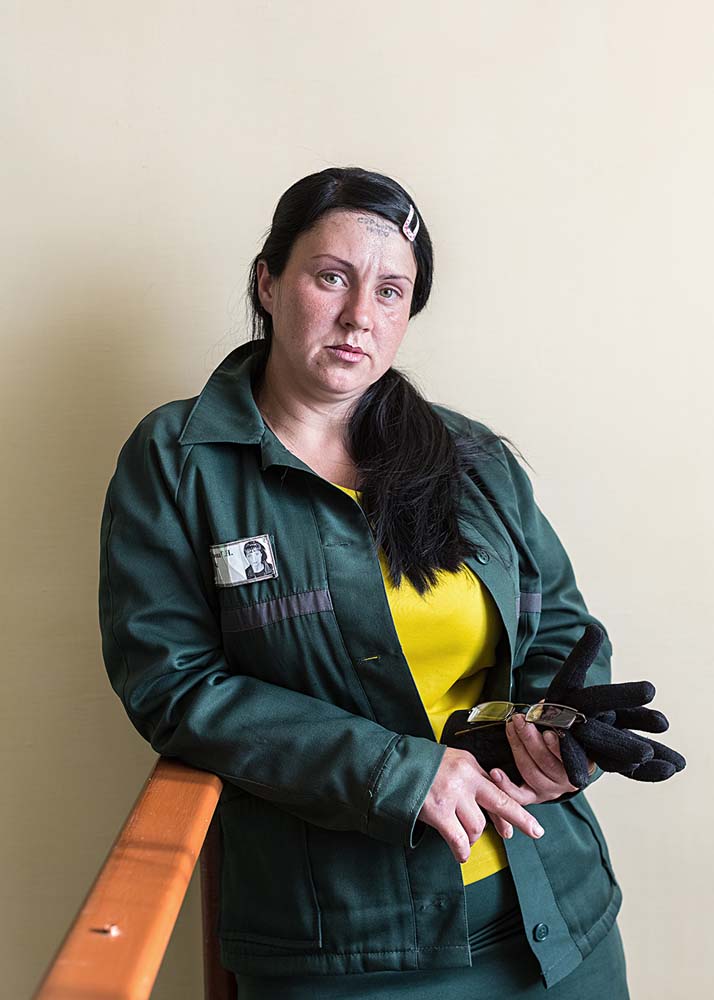
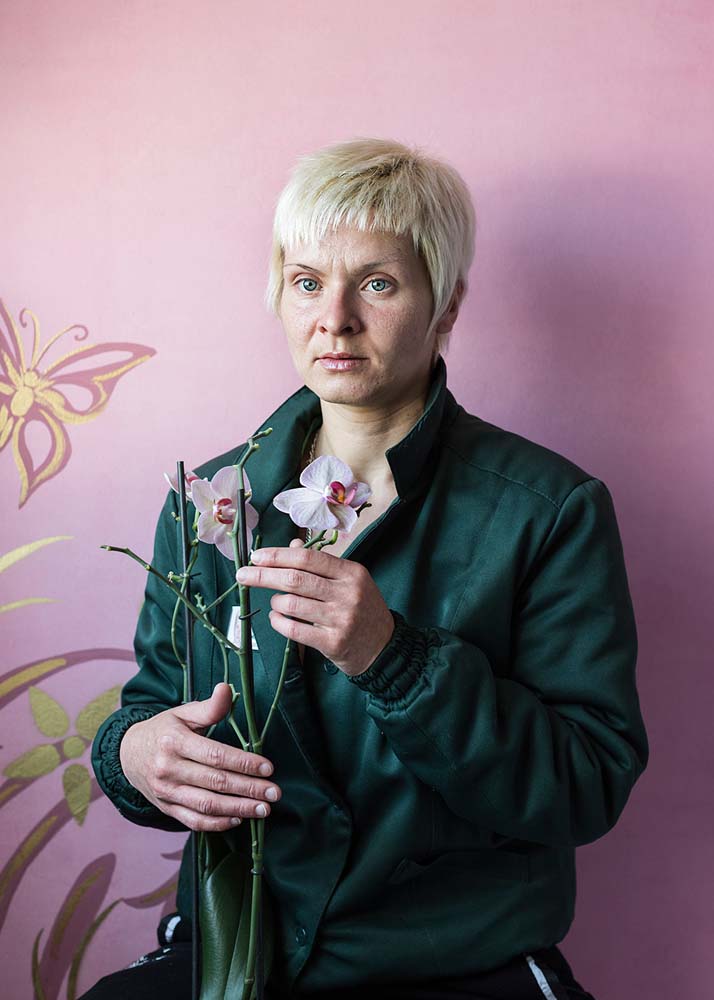
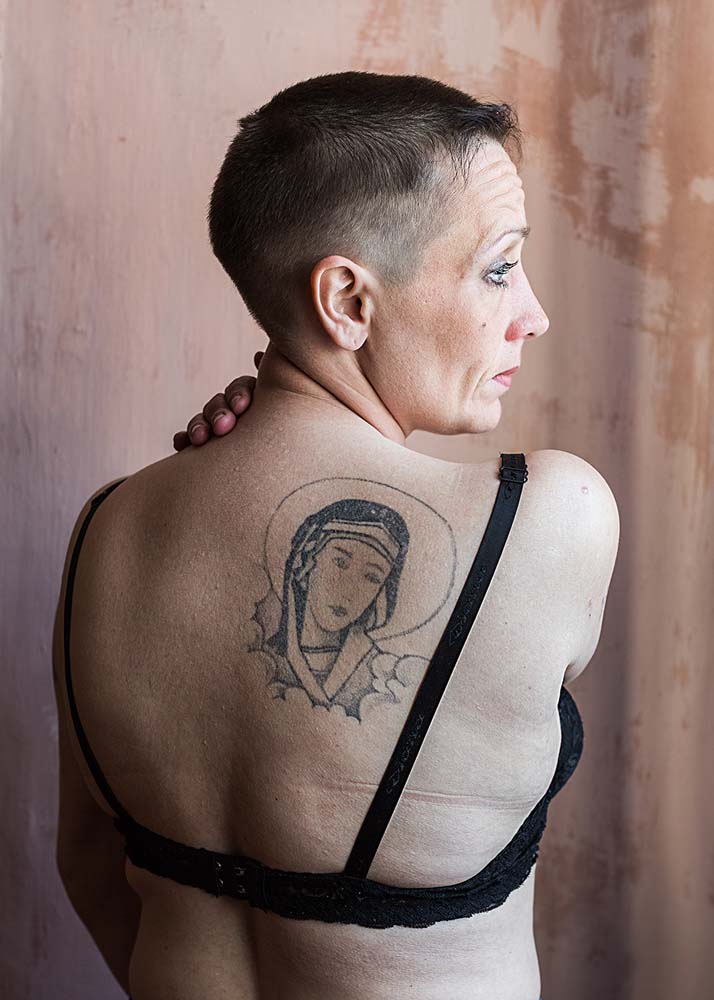

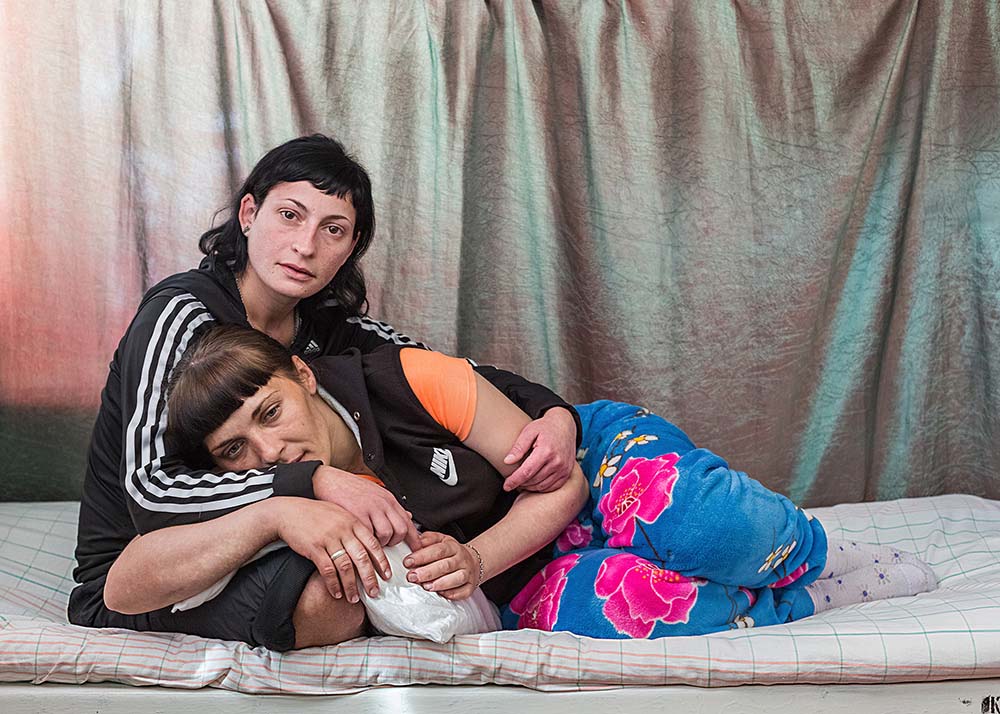
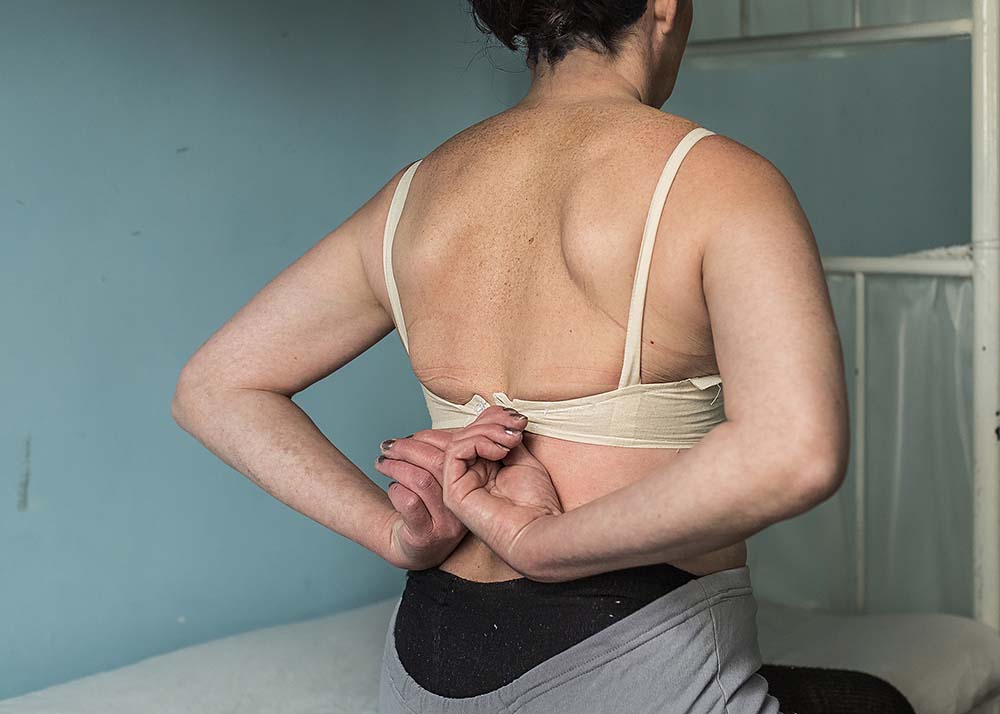
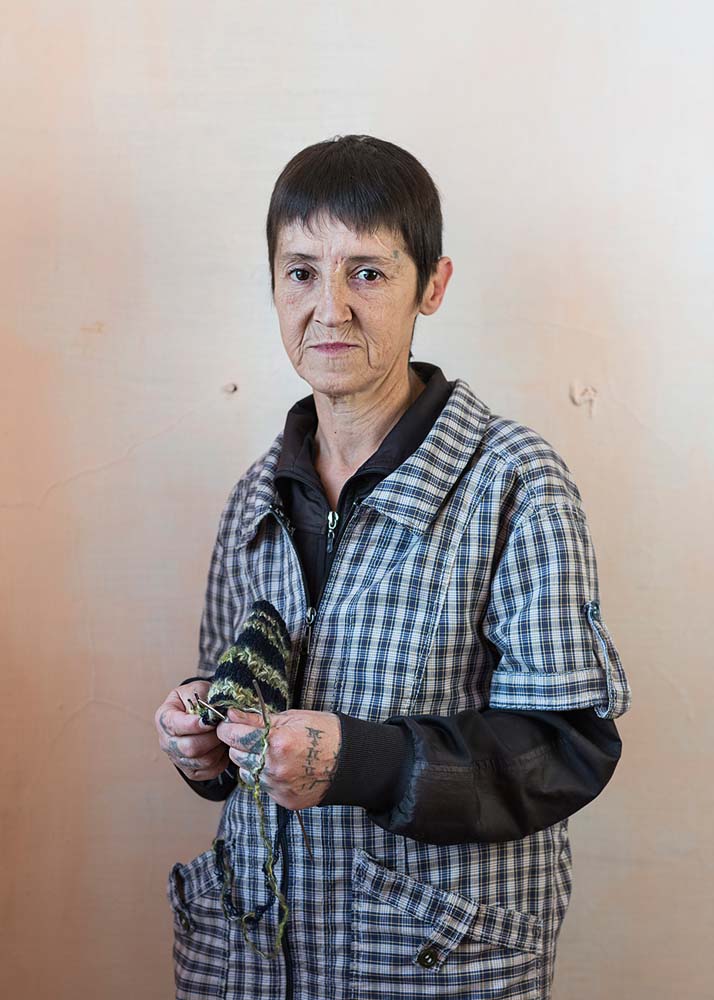
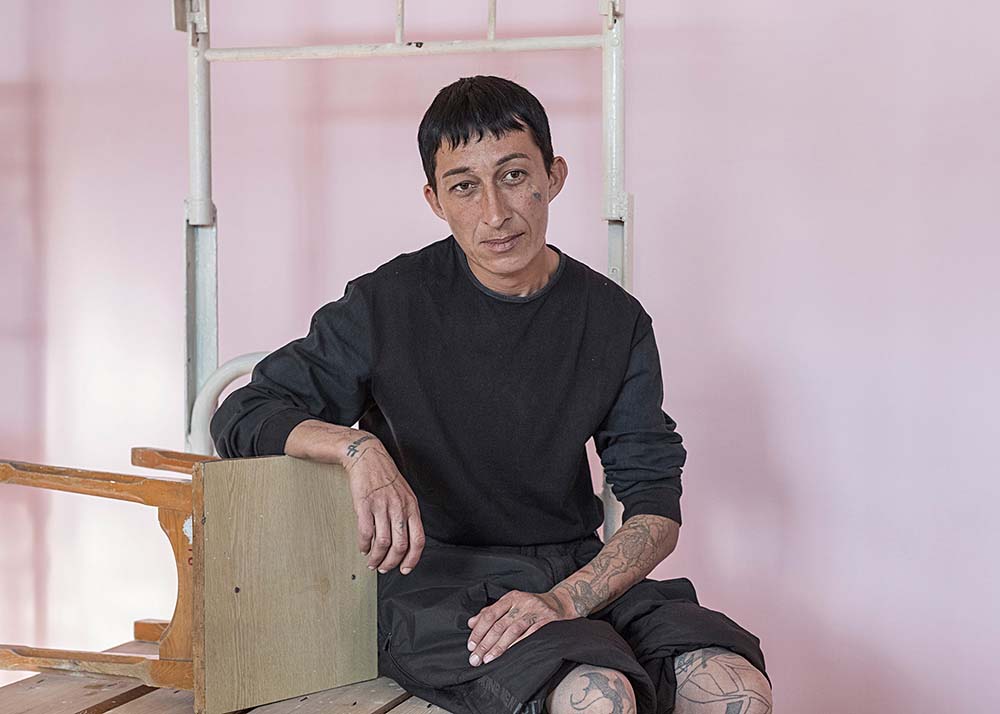



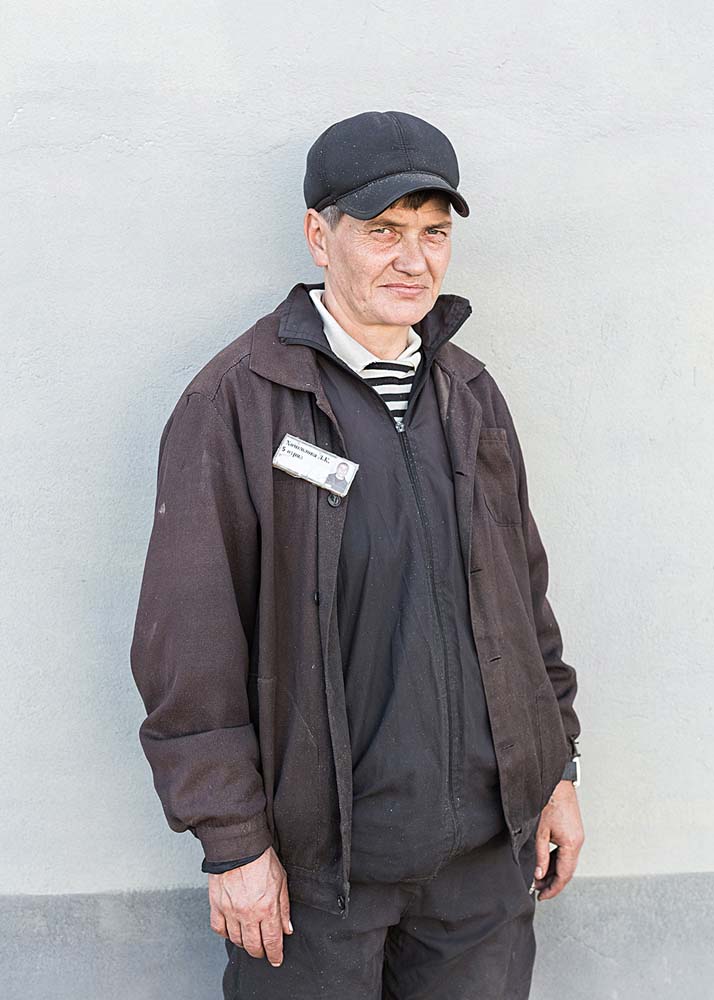

PROJECT LAUNCH: Artist's Statement
Winner: Elena Anosova
Section
The project about women's prisons is part of a trilogy that is centered around lives of women in closed institutions. The impulse to research such communities arose in a reflection of my teenage period spent at the closed rehabilitation boarding school. I spent few months, working in several prisons for women in Siberia.
In a paradoxical way, in Russia, almost exultant romanticization of the prison with all rogue romanticism coexists hand in hand with squeamish rejection of daily prison routines and living habits of inmates. It is quite possible that the recognition of a prison as the periphery of the social, as the border of civilization, lies at the very base of this heady mixture of romantic enchantment, revulsion and opaque, viscous fear.
Nobody is protected from the caring attention of a flaming eye and its penetrating laser beams. On a macro-social level this control is being realized through a dense network of administrative decrees and regulations; on a micro-social ground floor it is imposed via mesh of unsaid rules and unwritten sub-tribal protocols. In any case there is a wide variety of punitive measures and instruments capable of inflicting punishment of varying degrees of cruelty.
In the enclosed space of prison a woman is always in the position of being watched, observed. She is deprived of any - even fictitious or imaginary - possibility to be alone. Many years of complete nudity and the loss of intimate space cripple a personality that is placed in a society as merciless as it sees fit to crimes committed.
For me it was more important to try to catch women’s inward, self-isolating gaze, their faces and gestures deformed by constant watchful presence of prison authorities and cellmates; to find bits and splinters of the private and the intimate, brought forcibly out for communal view and judgment.

PROJECT LAUNCH: Artist's Statement
Juror's Choice: Wendel A. White
Chosen by: Alison Nordström, PhD , Independent Curator; Artistic Director, Fotofestiwal Lodz
Schools for the Colored
In W.E.B. DuBois' "The Souls of Black Folk" he describes an early school experience, "...I was different from the others; or like, mayhap, in heart and life and longing, but shut out from their world by a vast veil."
Schools for the Colored is an extension of the ideas that formed the project "Small Towns, Black Lives," in that; it is a continuation of my journey through the African American landscape. In "Schools for the Colored" I began to pay attention to the many structures and sites (also making photographs of places where segregated schools once stood) that operated as segregated schools.
These photographs depict the buildings and landscapes that were associated with the system of racially segregated schools established at the southern boundaries of the northern United States. This area, sometimes referred to as "Up-South," encompasses the northern “free” states that bordered the slave states. "Schools for the Colored" encompasses a representation of the duality of racial distinction within American culture. The "veil" (the digital imaging technique of obscuring the landscape surrounding the schools) is a visual manifestation of DuBois' concept, shaping a visual narrative within these photographs. Some of the images depict sites where the original structure is no longer present. As a placeholder, I have inserted silhouettes of the original building or what I imagine of the appearance of the original building. The architecture and geography of America’s educational Apartied, in the form of a system of "colored schools," within the landscape of southern New Jersey, Pennsylvania, Ohio, Indiana, and Illinois is the central concern of this project.

PROJECT LAUNCH: Artist's Statement
Juror's Choice: Álvaro Laiz
Chosen by: Frank Kalero, Photoquai Biennale Art Director, 2013 & 2015, Founder of magazine Ojodepez and Punctum, Co-Founder Goaphoto festival
The Hunter
"It was still a time when a Udege, looking at a deer, he thought he saw a deer-man (...) In those times all sort of things happened to people. Such things happened that nowadays do not" Udege tale.
Udege people have lived in the Boreal Jungle for hundreds of years. Due to their close contact with Nature, their beliefs are riddled with references to supernatural forces who shall be respected.
In 1997 a Russian poacher called Markov ran into the trail of a gigantic Amur tiger. Despite the risk, Markov saw the tiger’s footprints as a promise for a better life. He shot the tiger, but was not able to kill it. Udege people believe that if someone attacks a tiger without a reason, Amba will hunt him down. Unexpectedly, Markov unleashed the Amba, the dark side of the tiger.
During the following 72 hours the animal tracked down Markov and killed him. Later investigations suggest that the tiger planned its movements with a rare mix of strategy and instinct and most importantly, with a chilling clarity of purpose: Amba was seeking for revenge.
This animistic belief constitutes the leitmotiv to experience the impact of Nature in the Udege communities across one of the last remains of shamanism: the Russian Far East hunter’s culture.

PROJECT LAUNCH: Artist's Statement
Juror's Choice: Laura Morton
Chosen by: Ingo Taubhorn & Claudia Seidel , House of Photography Hamburg
Wild West Tech
From the original Gold Rush to the Summer of Love, San Francisco is a place where young people have flocked at certain points in history to follow their dreams. Now, a constellation of start-ups and technology giants in the city and the Silicon Valley are attracting a new crop of dreamers while redefining, through their products, the very fabric of our society.
The incredible success of some of these companies, which have given birth to thousands of new millionaires, has caused a modern-day gold rush that has gripped the San Francisco Bay area. Many young entrepreneurs, geniuses and idealists are flocking to the region with the hope of striking it rich.
My project “Wild West Tech” explores the lives and personalities of these “dreamers” as they navigate this rapidly evolving environment.
I’ve been documenting these individuals as they work long hours to build their companies. Their lives are intertwined: they live with each other, network with one another, compete with everyone, but also party together. I’ve witnessed entrepreneurs sleeping in their offices as they lacked the funds for rent. I’ve visited co-working spaces, where many of these start-ups originate from, and gained access to co-living houses – sometime referred as hacker hostels, where large groups of entrepreneurs live together in one building.
At the moment the buzz around the industry has created an environment where investors are willing to take big risks on young technology companies, but is this another tech bubble? For every success story there are many more failures, yet most of these dreamers believe that the industry is a true meritocracy: those who deserve to succeed will do so.
My goal has been to create an in-depth profile of the individuals at the heart of an economic boom, illustrate an industry that is trying to create products that redefine our society and create a historic document of this moment in history.

PROJECT LAUNCH: Juror's Statement
Alison Nordström, PhD
Independent Curator; Artistic Director, Fotofestiwal Lodz
As a juror of Center’s Project Development Grants I am reminded of what got me into this field in the first place. The act of looking at hundreds of submissions and thousands of images (and I purposively do the first pass in one very intense multi-hour session) is uplifting and encouraging. The review process affirms that photography is alive and well in subsets, intentions and vocabularies as disparate as those of photojournalism, visual anthropology, autobiography, conceptual art and abstraction. Never has the choice of processes, styles and subject matter been broader. Each individual body of work I saw added a unique and personal story to this great mix that is photography. I was impressed by their overall intelligence and passion.
Intelligence and passion are essential to any successful photographic project but they are not enough. At the end of the day, the pictures need to look good. The choice of medium, style and approach must support the subject and emotion of the image. Photographs need to excite, enthrall and envelope the viewer, not just because of the ideas behind them but of how they look---how they speak to the left side of the brain. They need to communicate visually even without their captions or other explanations. They need to resonate at the moment of being seen and then linger in the memory and the personal mental archive. I ask photographers to challenge familiar forms and genres! Eternal subjects like death, love, family and land must be photographed in fresh ways. Look at as many other photographs as you can. Read everything! The more you know and feel about the world, the more the fragments of it that are your photographs will astonish and inform.

PROJECT LAUNCH: Juror's Statement
Frank Kalero
Photoquai Biennale Art Director, 2013 & 2015, Founder of magazine Ojodepez and Punctum, Co-Founder Goaphoto festival
There are few career fields where you constantly are exposed to public opinion and judgment. Creative disciplines are one of those fields. As a photographer if you want to be engaged with the photo industry, you must go through the penitence of publicly exposing your work and being judged by people you have never heard of or don't know. You must put yourself on the line.
We, the jury, were not choosing the best one among hundreds of submissions. Simply because there’s no such thing. What makes work strong is a lot of personal connections in addition to a lot of cultural and academic input. From these standpoints the jurors must come together for a democratic decision. I believe that democracy in art can be a recipe for mediocrity, but this time it wasn’t. We have an outstanding winner.
As for the winner and my Juror’s Choice, both are committed projects, with a strong social and cultural approach, great formal and technical aspects, and excellent storytelling. I can feel that the photographers were challenged in the pursuit of the images. And for all of these reasons, I had a strong connection and resonance with the winning photo essays.
I thank you photographers, for sharing your work and for engaging yourself with those hidden stories. I thank you for spending a little money in making it happen. Unfortunately not all the good ones can be grant recipients. Know that if you are authentic to your story and your voice, these results shouldn’t be a hindrance to your work. Recognition and money will come, hopefully not in a posthumous moment.
Thank you again to all of you.

PROJECT LAUNCH: Juror's Statement
Ingo Taubhorn & Claudia Seidel
House of Photography Hamburg
We chose Laura Morton and her project "Wild West Tech" as our Juror's Choice recipient. The project presents a generation's faith in a bright future through the promise of IT-Engineering being the means to create a better world. Whether this will turn out to be true or not is a fact that only time will tell us. Insofar, her perspective highlights a very decisive point in the development of future societies.

